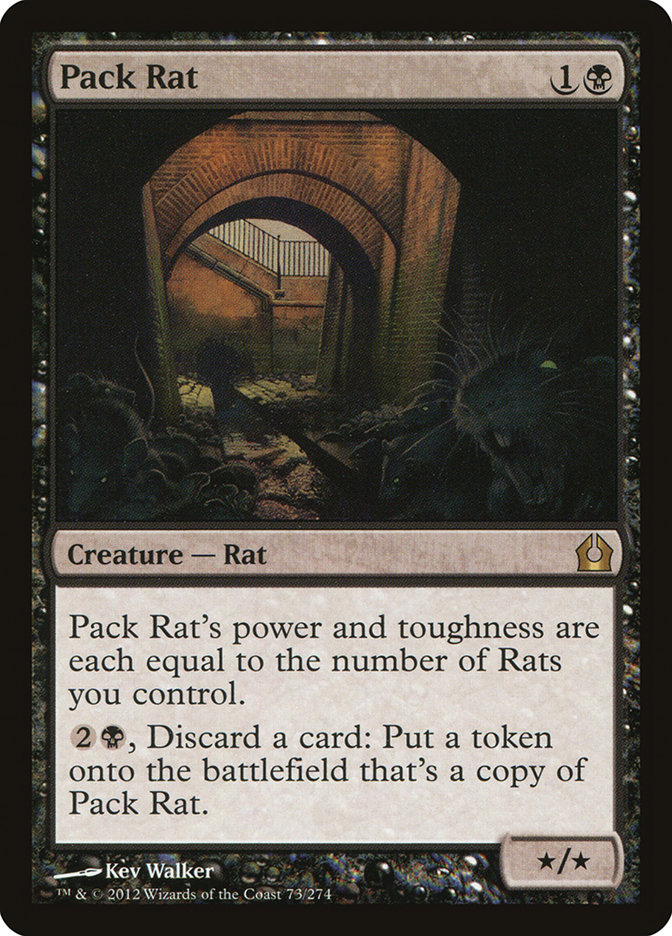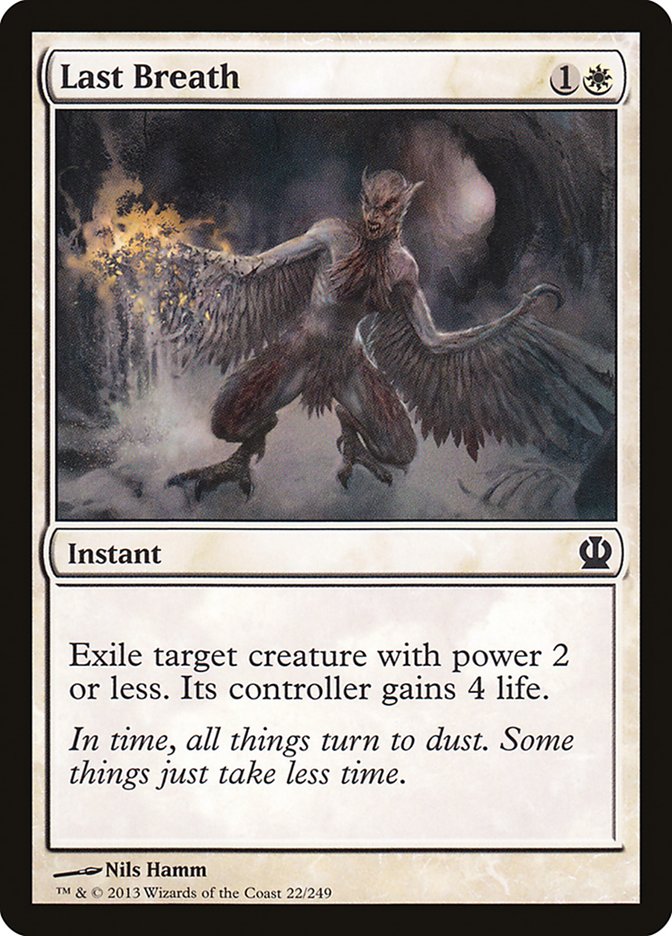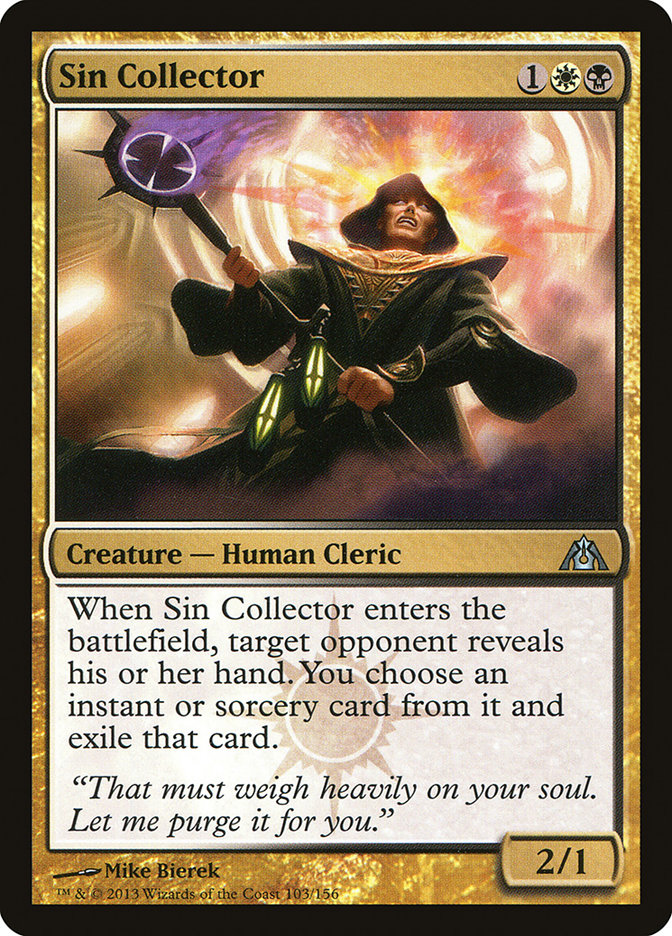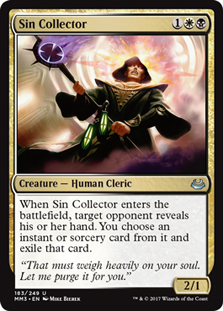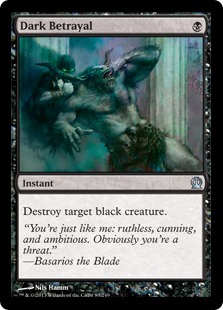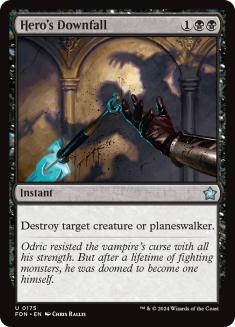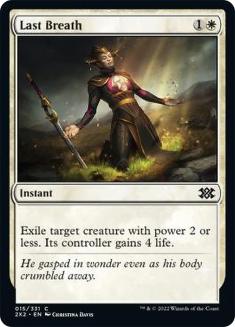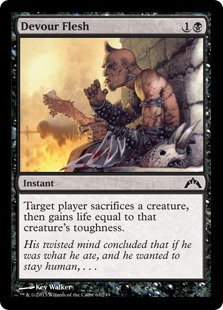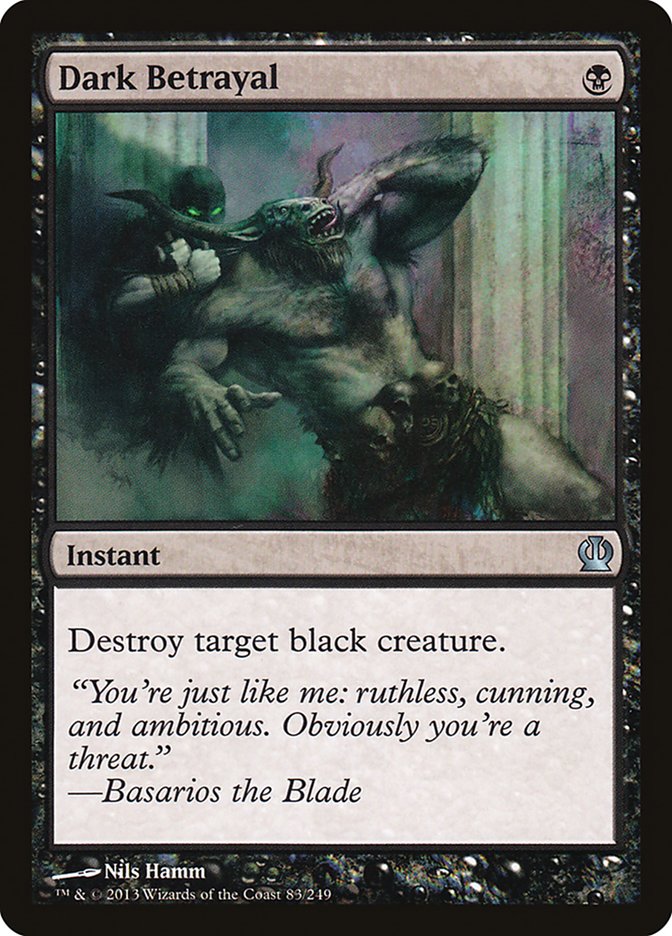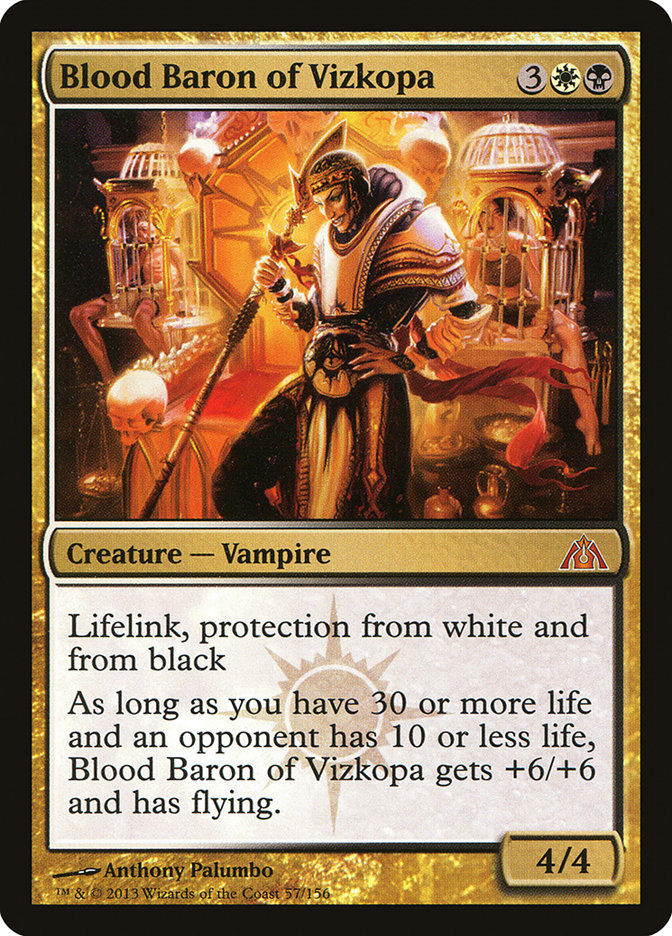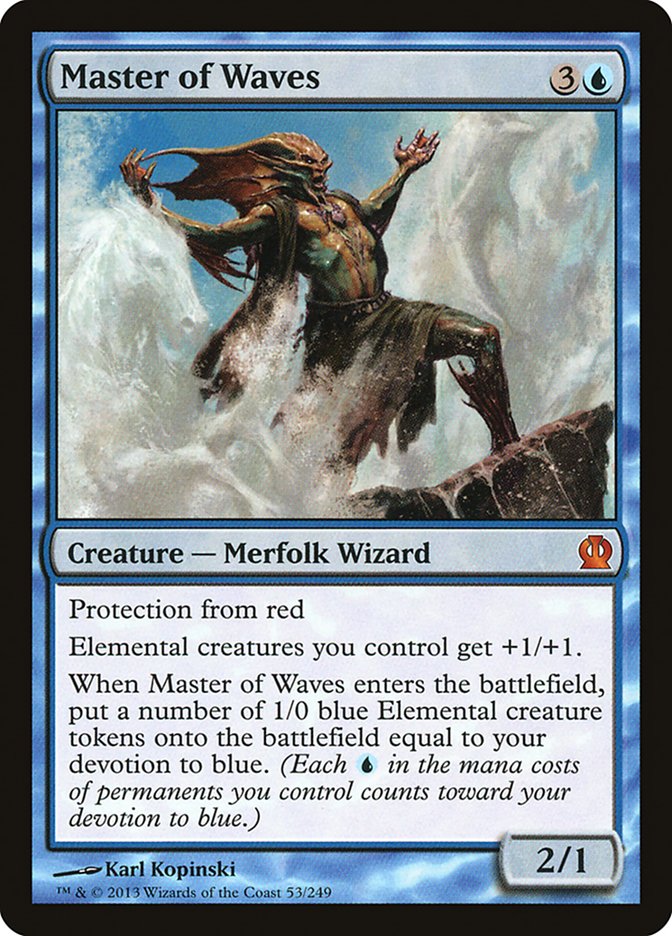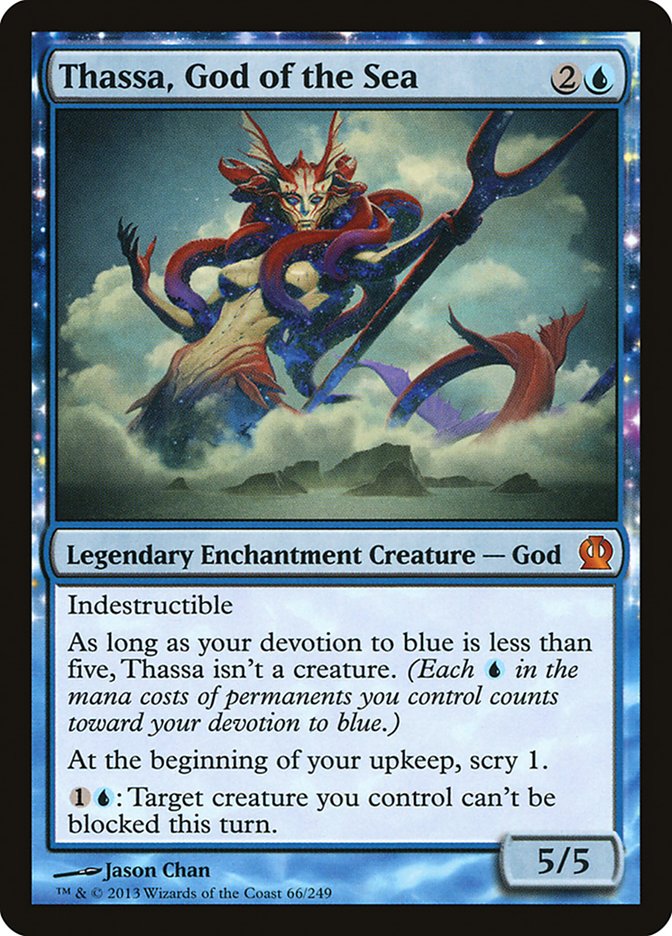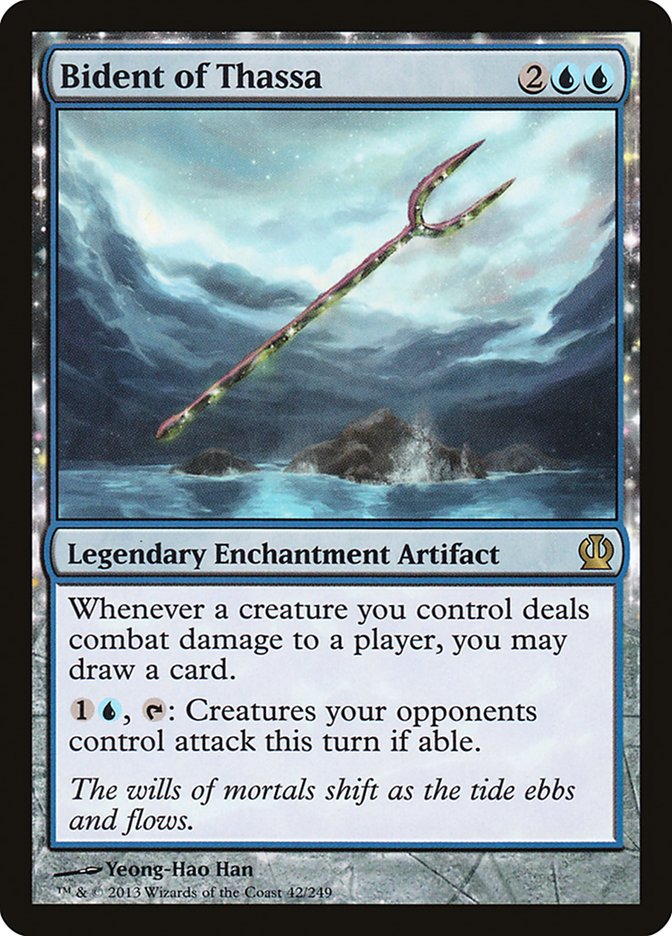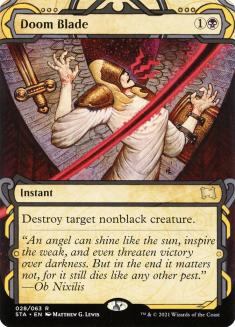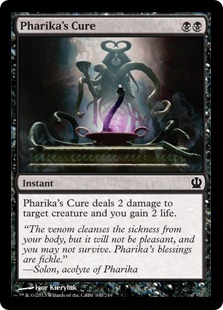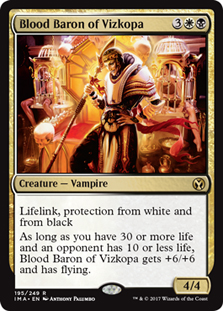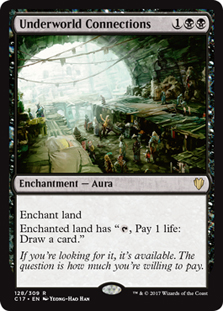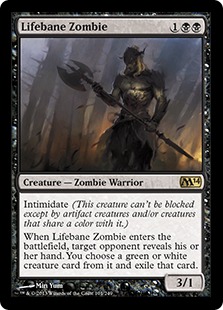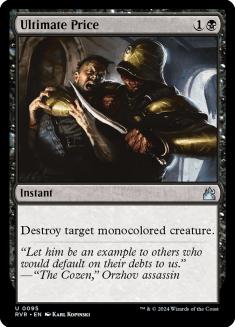Hello all! Over the past month or so my articles have been all over the map regarding format. I’ve dipped my toe into Vintage, Legacy, Modern, and Sealed, but today I’m going back to the breadbasket of Magic and will be talking about Standard.
I have been playing a ton of Standard the past two weeks to get ready for the upcoming PTQ season and have played with and against every deck in the format that I know to exist. After it was all said and done, there is one deck that I will be sleeving up for this Saturday’s PTQ: B/W Control.
Many of you will obviously recognize the deck from recently winning the Standard Grand Prix in Dallas-Fort Worth, Texas. I am going to talk about specifically why I think it is a fantastic choice to play in an upcoming SCG Open or PTQ, detail the small changes that I’ve made to it, and give an in-depth matchup-by-matchup analysis of how to play this deck.
Enjoy!
I Started On The Bayou
Various black decks have been where my head has been at over the course of the past two weeks. I think that they are outright powerful, very versatile, and get to play with many of the best cards in the format.
First of all, Thoughtseize is the best card in the format—and it’s not close. The ability to trade one card and one mana for perfect information and the best card in their hand is absolutely bananas. Second of all, there are times where Thoughtseize can actually equate to free wins, like when an opponent keeps a loose hand and you take the only thing away from them that made the hand playable.
I spent most of last week working on a B/G deck that I thought was quite good. The deck started as the brainchild of Michigan ringer Mark Biller, and it caught my eye because he had been making Top 8 of the weekly event regularly. After playing a long set against him with my Esper deck, he was able to thoroughly make good on his claim that "B/G crushes Esper."
Creatures (13)
Lands (25)
Spells (22)

Mark’s deck was great at doing a lot of things that I think were more important two weeks ago than they are today. First of all, he absolutely crushes the control decks. Second of all, four Abrupt Decays basically ensure he is capable of doing great things in the proto Mono-Black Control mirror match since Abrupt Decay kills Underworld Connections and Nightveil Specter which are the two most difficult-to-kill and impactful cards in the match up.
Second of all, four copies of Abrupt Decay basically turn Detention Sphere into a liability against control decks like U/W and Esper.
As time went by and I fell in love with the card Pack Rat, I ultimately turned Biller’s B/G Control deck into a Pack Rat deck. I kept many of his card choices and angles in place but simply made room to play the Rat.
Creatures (16)
- 4 Pack Rat
- 4 Desecration Demon
- 4 Nightveil Specter
- 3 Gray Merchant of Asphodel
- 1 Erebos, God of the Dead
Lands (25)
Spells (19)
Sideboard

The correct numbers are four and four.
Until the format becomes sufficiently hateful against the card, I think that black decks should just be playing four Pack Rats and four Mutavaults. Pack Rat reminds me a lot of playing with Bitterblossom in Faeries back in the day. On turn 1 you Thoughtseize them and then just make Pack Rats for the rest of the game. They get so big and deal so much damage (especially combined with a Mutavault or two) that it is often just bigger and more powerful than your opponent’s spells.
One thing I have seen people doing (that I think is outright wrong) is to not play four Pack Rats and four Mutavaults in their decks. These cards become more powerful the more copies of them that you draw. Playing a second Pack Rat is the same thing as making a token—except that it costs one less mana.
And in the mirror match with Pack Rat, it is often who has more Mutavaults that will ultimately decide whose Rats get fat and whose Rats get trapped.
How To Rake With Pack Rat
The biggest complaint I hear about the card Pack Rat from people who don’t play with it is that the card sucks.
These people are wrong, and most of the time the reason that they are wrong is that they don’t actually play correctly with their Pack Rats.
First of all, anybody who is just splashing two Pack Rats and no Mutavaults is probably correct in evaluating that their Rats are not very good. The thing that makes Pack Rat so powerful is the synergy between the Mutavaults and potential to draw more Pack Rats.
It is a pretty big swing on turn 5 to drop a fifth land, cast a Pack Rat, make a Pack Rat, and attack for twelve. Also, on turn 5 it is a big deal to attack with three Pack Rats, make a Pack Rat, and activate two Mutavaults to attack for fifteen.
If you are not maxed out on Pack Rats, these plays are not really an option very often.
Ok, so point number one is the fewer Pack Rats and Pack Rat related Mutavaults one plays, the worse one’s Pack Rats are.
Secondly, Pack Rats are only good when you are ahead, but they are pretty good at getting ahead, especially in the black decks with lots of removal.
I see a lot of players who assume that because they played a Pack Rat on turn 2 that their turn 3 play must be to make a Pack Rat; many times this play is wrong and will lose the game.
I usually want to start making Rats when I am ahead on the board. So if I am on the draw and my opponent plays a Nightveil Specter, making a Pack Rat isn’t very good. I’d rather kill the Specter if I can more often than not. I’ve seen people making a second Pack Rat when their opponent has a Polukranos in play—what kind of insanity is that?!
As a rule of thumb, you want to make a Pack Rat when doing so puts you ahead on the board. If making a Pack Rat puts you ahead on the board and allows you to attack in for damage, it stands to reason that in most scenarios making another Pack Rat next turn will also keep you ahead on the board. Each Pack Rat becomes exponentially better, so once an opponent is behind to your Pack Rats they can’t really draw a removal spell to get ahead of them (they will still be behind) and any creature they draw will likely be worse than another Pack Rat.
I play a lot of games where I play Pack Rat on turn 2 and don’t actually make a Pack Rat until much later in the game because I am busy killing their guys with removal, drawing cards with Underworld Connections, or casting Demons.
Another thing to remember is that Pack Rats are vulnerable in their early stages and can be brought down like a house of cards to a removal spell. You have to be careful. In many cases you need to judge whether it is just better to follow up a Rat with a Specter, Connections, or Demon because getting blown out by removal in combat is too much of a liability.
So A Priest, A Demon, A Vampire, & A Rat Walk Into A Bar . . .
Ultimately, I fell in love with a different black deck than the B/G one that I played for a while. In the current metagame I think that B/W is just better positioned than B/G because of Blood Baron of Vizkopa.
However, if the metagame shifts and gets taken over by decks that are maxing out on Nightveil Specters and Detention Spheres, I could see the B/G deck once again being well positioned.
Here is the version of the deck that I plan to play in the PTQ on Saturday:
Creatures (14)
Lands (25)
Spells (21)
- 2 Duress
- 1 Last Breath
- 4 Thoughtseize
- 4 Underworld Connections
- 2 Ultimate Price
- 4 Devour Flesh
- 4 Hero's Downfall
Sideboard

I know it seems weird to fiddle with a deck that just won a Grand Prix, but I didn’t feel comfortable with the Plains and Swamp in the last two land slots and swapped them out for two Orzhov Guildgates. I very much favor the stability of dual lands in a deck like this and couldn’t get my head around playing a Plains in a deck that only has a handful of white spells and a bunch of spells that cost a single B or BB.
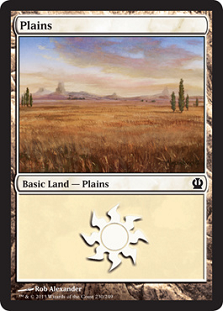
Not gonna do it.
I also cut the second Last Breath for the second Sin Collector in the maindeck because I think there will be less Nightveil Specters for the time being and more people playing U/W Control.
Swapping one hate card for another.
I think that Sin Collector is an absolutely fantastic card (in general and especially at the moment), and I was happy to find room to play the full four between my maindeck and sideboard. (Or if any of you listened to MJ’s stream on Tuesday, the mainboard and sidedeck.:)
The sideboard here is basically the same as the version from the GP except I shaved off some of the cards I didn’t see as being as useful to include more copies of the high-impact cards I felt I would want more access to:
Four Dark Betrayals instead of three, three Doom Blades instead of two, two Duresses instead of one, and two Sin Collectors instead of one.
The Matchups
Let’s talk about the matchups that are the most important.
The Mirror
Everything is important in the mirror match depending upon what is going on with the board.
So basically being ahead on the board is really important.
There are no sweepers, so just getting as much stuff online and attacking is usually the best strategy to win the game.
Underworld Connections is a really important card here because it will eventually take over the game and provide the player using it with insurmountable card advantage.
If your opponent has Underworld Connections and you don’t, you become the beatdown deck basically no matter what because if you don’t kill them they will eventually just bury you with card advantage. It also helps that Connections will help you win the game even with a skeleton crew of critters because it will deal them damage as well.
Pack Rat is usually the best card for beating Connections because it is a creature that they can’t really stop with just one removal spell and ends up dealing a lot of damage over time. If they are giving up positional advantage over time to draw cards by using one of their mana to draw and not make mana to cast spells, it is easy for that player to fall behind on the board.
And what do we know about Pack Rat? When they are behind on board, make Pack Rats!
Turn 3 make a Pack Rat token and attack usually beats turn 3 Underworld Connections.
In the mirror match I sideboard in:
And sideboard out:
There is no card better than Dark Betrayal in the Mono-Black Devotion mirror.
Dark Betrayal is absolute berries in the mirror since it allows you to produce huge tempo swings and seize control of the board for only B.
I basically just upgrade my worst removal spells for the best possible removal spells. Most of the time just being fast is what is ultimately important because getting and staying ahead is so important in this matchup. I also like attacking their hand really quickly to take away their removal spells to ensure my threats stick or to make sure that they don’t get Underworld Connections.
The Haymaker
Blood Baron of Vizkopa is insanely good in the mirror, which improves the value of Sin Collector. The only way to actually kill a Baron in the mirror is Devour Flesh, and collecting their sins takes their best removal spell and provides a sacrifice blocker to prevent them from killing the bloody boy.
Control the board and win the match.
Mono-Blue Devotion
Mono-Black against Mono-Blue comes down to whether or not a few specific things happen during the game.
Mono Blue only actually has a few ways in which to win the game, and if the black player can stop these things from happening, they will almost certainly win.
If B/W can stop these cards from being factors in the game, it gets to win.
Stopping these cards tends to be a pretty tall order, but it is doable.
Mono-Black’s cards are more powerful than Mono-Blue’s in a vacuum, which gives the advantage to black. However, the blue deck builds powerful synergies that create situations where they have cards like Master, Thassa, and Bident that are built to become the absolute blueberries in power level.
If you can use your Thoughtseizes to pluck out key cards or chains in their curve and use your removal spells on the correct things, most of the time the board ends up with them having two little Birds and you having a Demon and a Blood Baron.
However, when they curve out and you don’t interact with them, it is very possible to find one’s back against the wall and die.
Once again, keeping parity on the board is important, and not getting trumped by their power cards (or negating their power cards) is really important. If you can deprive them of devotion to make Thassa a creature, it doesn’t matter.
Against Mono-Blue Devotion, I sideboard in:
And sideboard out:
You want more removal! Almost all of their cards are creatures, and most of them aren’t very good on their own.
Trading one-for-one every turn and then playing a Desecration Demon is a great way to win this matchup.
I board out Underworld Connections because you can’t afford to draw multiple copies early. Most of the time I don’t want to play Connections until later on in the game when they are out of guys and I am looking to reload.
Save a kill spell for this guy.
Make sure you don’t go crazy killing everything and not have a removal spell for Master of Waves. I have seen more than one player Doom Blade a Judge’s Familiar and then lose to a Master of Waves off the top.
I also bring in Duress against Mono-Blue to help out with taking their Bident, Jace, and other spells. A lot of the time they are apt to board out Tidebinder Mage for actual spells, which makes it very likely that Duress will catch a nice one on the way down. Remember, trading one for one is really powerful against Mono-Blue because their cards are not good individually, only in multiples via synergies.
U/W/x Control
These matchups are a little bit tough, but I haven’t found them to be too much worse than a coin flip.
Black has powerful threats that need to be answered and lots of annoying disruption cards like Thoughtseize, Duress, and Sin Collector. Most of the time when control wins, they really need to topdeck well in order to do so.
With that being said, the black decks have a lot of removal spells in the maindeck, which can equate to dead draws, so getting better post-sideboard is a pretty big deal.
Having Mutavault is a really big deal because it allows the black deck to attack for damage even without creatures on the board as a follow up to Supreme Verdict and protect Blood Baron of Vizkopa from Devour Flesh.
Against Sphinx’s Revelation decks, I sideboard in:
And sideboard out:
If you are expecting a bunch of Blood Baron of Vizkopas from your opponent, it is reasonable to leave in more copies of Devour Flesh and take out Hero’s Downfall or something else in order to fight their Barons.
Essentially, the plan is to take out dead cards and attack their hand really hard via discard (four Thoughtseizes, four Sin Collectors, and three Duresses after sideboard).
If you can stick an Underworld Connections after you have stripped their hand, it is almost always a win.
The goal is to empty their hand and go to work on their life total.
G/R Devotion
I have found this matchup to be pretty difficult and would say that it is the matchup I least want to play against in a tournament.
They have lots of mana and lots of quality threats, and their mana dorks really make Devour Flesh into a liability (especially when they are on the play).
The goal is to somehow get ahead on the board and be able to kill their giant monsters as they play them. It is also necessary to deploy some kind of board presence so that you will be able to attack their planeswalkers before they can simply generate too much advantage.
Game 1 is really hard because we simply don’t have enough good removal and efficient threats to battle through all of their fatties and walkers.
Against G/R Devotion, I sideboard in:
And sideboard out:
I hate Devour Flesh against Elf decks. I don’t need or ever really want to be attacking their Elves. The key is to leave them with a couple of mana accelerants and no real way of doing anything productive with their mana.
Lifebane Zombie is great here because it will strip out a creature from their hand and also be able to attack their planeswalkers that they topdeck.
My strategy for winning this matchup is to become the control deck and run them out of cards that matter and then beat them down with Demons. It is kind of awkward that Blood Baron (our premier threat) matches up really poorly against all the G/R threats (Arbor Colossus, Stormbreath Dragon, and Polukranos), but the good news is that all of B/W’s other cards match up really well. For instance, are Ultimate Price, Doom Blade, Lifebane Zombies, and Thoughtseize good against these cards? Yes.
This should be more than enough to get those of you who are interested in playing the deck started and also be a helpful little read for those of you who will be playing against the deck this season.
I played the B/W deck at a Thursday night Standard tournament and went undefeated and felt really good about what the deck was doing and where it’s at.
For the foreseeable future I feel like I am going to be locked in on playing this list.
Black in Standard may not have Mirari and Cabal Coffers like back in the day, but I definitely think that it has the tools and the technology to be a big player for a long time to come.

